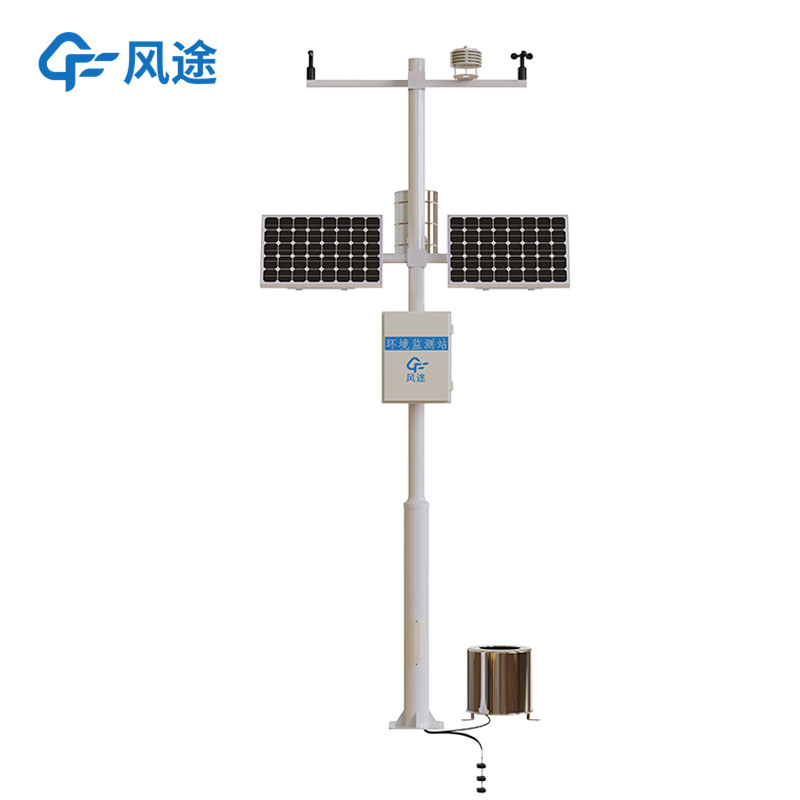Shandong Fengtu IOT Technology Co., Ltd
Sales Manager:Ms. Emily Wang
Cel,Whatsapp,Wechat:+86 15898932201
Email:info@fengtutec.com
Add:No. 155 Optoelectronic Industry Accelerator, Gaoxin District, Weifang, Shandong, China

Sales Manager:Ms. Emily Wang
Cel,Whatsapp,Wechat:+86 15898932201
Email:info@fengtutec.com
Add:No. 155 Optoelectronic Industry Accelerator, Gaoxin District, Weifang, Shandong, China
time:2025-01-08 09:17:51 source:Weather Station viewed:320 time
For a long time, agricultural production has largely relied on experience and the observation of the weather. When it comes to sowing, irrigation and dealing with extreme weather conditions, decisions often depend on traditional wisdom passed down orally. Nowadays, agricultural meteorological stations are helping agriculture break free from the dilemma of relying on "experience" and move towards a precise era of "relying on data".
Agricultural meteorological stations are usually located in production areas such as farmlands, orchards and vegetable bases. They are precision instruments that integrate multiple high-techs. Temperature sensors accurately monitor changes in atmospheric temperature, helping farmers identify the right time for spring sowing and autumn harvesting. Humidity sensors keep track of the moisture content in the air and soil in real time, providing a basis for irrigation and avoiding waste of water resources. Illumination sensors quantify the intensity and duration of light, making it convenient for farmers to plant crops at appropriate densities according to the characteristics of different crops.
The data collected by these sensors is quickly aggregated to the cloud or agricultural management centers through the built-in transmission system. Agricultural technicians and farmers can check the real-time weather conditions in the fields at any time through mobile phones and computer terminals. Once the meteorological stations issue disaster warnings such as strong winds, heavy rainstorms and frosts, farmers will have time to reinforce greenhouses and harvest crops in advance to reduce losses.
For example, after a large vegetable planting base introduced agricultural meteorological stations, it arranged farming activities scientifically based on precise data. As a result, water and fertilizer were saved, the annual vegetable yield increased by 10%, the incidence of pests and diseases decreased, and both economic and ecological benefits were achieved.
The popularization of agricultural meteorological stations has promoted the development of agriculture towards scale and intelligence. Large agricultural enterprises use meteorological data to optimize planting layouts, and smart agriculture platforms send personalized farming suggestions, opening up broad prospects for the development of modern agriculture.

The FT-Y1S metal piezoelectric rain gauge is a high-precision rainfall measurement device suitable for various field monitoring scenarios. It utilizes a PVDF piezoelectric film as its core sensing component, capable of accurately detecting the physical signals generated by raindrop impacts. The sens...
Visibility can be measured by visual observation, relying on manual inspection to estimate the visibility distance based on whether a certain reference object is visible. This method is simple and intuitive, but it is highly subjective and has poor standardization and objectivity.We recommend using...
If you are looking for a great - functioning Cellular Weather Station, Fengtu's products are really worth a look. Their ten - element Cellular Weather Station is an all - rounder, capable of measuring wind speed, wind direction, temperature, humidity, air pressure, sunlight, rainfall, PM2.5, PM1...
Agricultural meteorological stations is an automated device specifically designed for monitoring the internal environment of agricultural facilities such as greenhouses. It helps growers scientifically manage agricultural production by collecting real-time data....